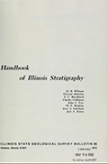Historical:Stewartville Member: Difference between revisions
mNo edit summary |
mNo edit summary |
||
| Line 6: | Line 6: | ||
|tree3=Kimmswick Subgroup | |tree3=Kimmswick Subgroup | ||
|tree4=Wise Lake Formation | |tree4=Wise Lake Formation | ||
|tree5= | |tree5=Stewartville Member | ||
|tree21=Paleozoic Erathem | |tree21=Paleozoic Erathem | ||
|tree22=Ordovician System | |tree22=Ordovician System | ||
| Line 29: | Line 29: | ||
==Type Section== | ==Type Section== | ||
The type section of the | The type section of the Stewartville Member is located half a mile west of Stewartville, Olmstead County, Minnesota, in a quarry on the north side of the Root River, where 28 feet of dolomite in the lower part of the member is exposed (Kay, 1935a, p. 567). | ||
==Extent and Thickness== | ==Extent and Thickness== | ||
| Line 35: | Line 35: | ||
==Description== | ==Description== | ||
The | The Stewartville Member is largely thick-bedded, pure dolomite, and many samples from the lower 10-15 feet (the Upper ''Receptaculites'' Zone) contain almost no insoluble residue. The bedding becomes thinner upward as a gradual transition to the shaly Dubuque Formation above takes place. The top of the Stewartville is placed at the lowest definitely argillaceous or shaly bedding plane. Above this position is the first occurrence of ''Pseudolingula iowensis'', which is common in the higher, more shaly part of the Dubuque Formation. The Stewartville Member is the ''Maclurea'' bed of early reports. | ||
==References== | ==References== | ||
Revision as of 21:56, 8 February 2018
Lithostratigraphy: Ottawa Limestone Megagroup >>Galena Group >>Kimmswick Subgroup >>Wise Lake Formation >>Stewartville Member
Chronostratigraphy: Paleozoic Erathem >>Ordovician System >>Champlainian Series >>Trentonian Stage
Allostratigraphy: Tippecanoe Sequence
Authors
H. B. Willman and T. C. Buschbach
Name Origin
The Stewartville Member of the Wise Lake Formation (Ulrich, 1911, pl. 27), the upper member (originally the Stewartville Formation), is named for Stewartville, Olmstead County, Minnesota, which is half a mile east of the type section.
Type Section
The type section of the Stewartville Member is located half a mile west of Stewartville, Olmstead County, Minnesota, in a quarry on the north side of the Root River, where 28 feet of dolomite in the lower part of the member is exposed (Kay, 1935a, p. 567).
Extent and Thickness
The Stewartville Member is about 60 feet thick in the type locality, but only 30-35 feet thick in northern Illinois.
Description
The Stewartville Member is largely thick-bedded, pure dolomite, and many samples from the lower 10-15 feet (the Upper Receptaculites Zone) contain almost no insoluble residue. The bedding becomes thinner upward as a gradual transition to the shaly Dubuque Formation above takes place. The top of the Stewartville is placed at the lowest definitely argillaceous or shaly bedding plane. Above this position is the first occurrence of Pseudolingula iowensis, which is common in the higher, more shaly part of the Dubuque Formation. The Stewartville Member is the Maclurea bed of early reports.
References
KAY, MARSHALL, 1935a, Ordovician Stewartville-Dubuque problems: Journal of Geology, v. 43, p. 541-590.
ULRICH, E. O., 1911, Revision of the Paleozoic systems: Geological Society of America Bulletin, v. 22, p. 281-680.
ISGS Codes
| Stratigraphic Code | Geo Unit Designation |
|---|---|
